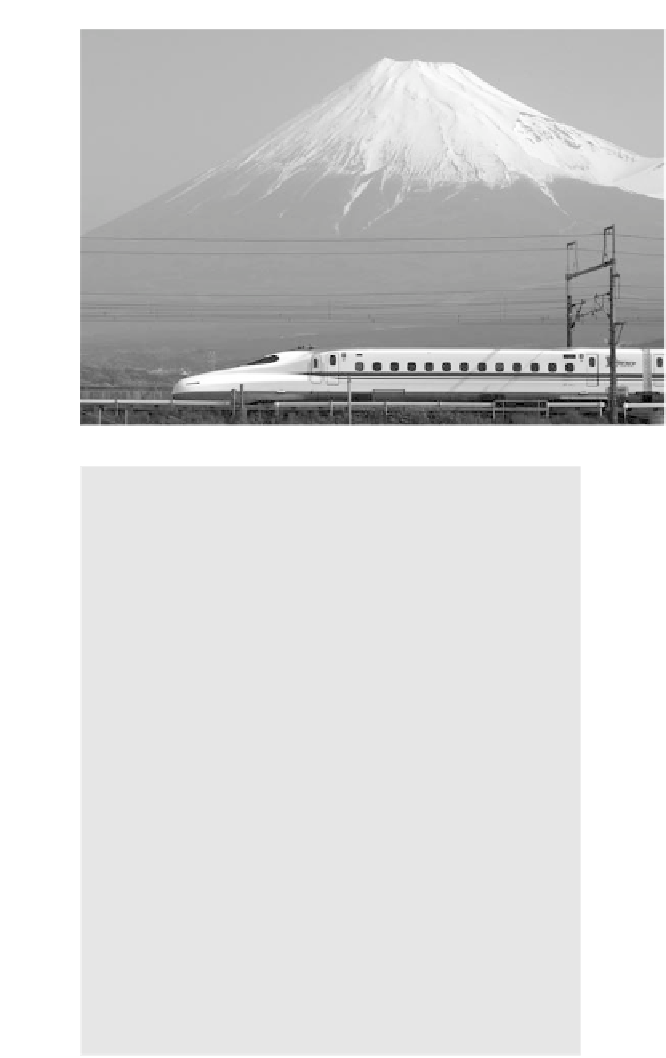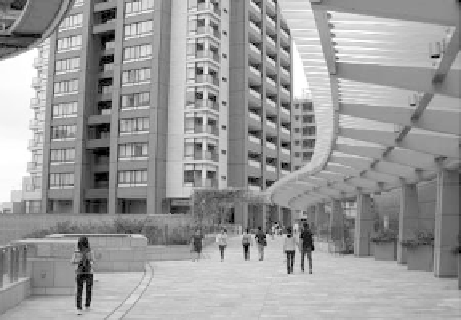Geography Reference
In-Depth Information
Figure 12-13
Central Japan Railway Company' s N700 series
Shinkansen bullet train travels past Mount Fuji.
©T ©Tomohiro Ohsumi/Bloomberg /Getty Images, Inc.
apartments in high-rise buildings and small condo-
minium units that are ironically called
manshon
(man-
sions) are the typical dwelling types. However, recent
data show that T Tokyo rents are dropping because of the
poor economy , and that “empty nesters” and two-income
households in particular are increasingly able to afford
housing in T okyo' s central wards. A new boom in inner-
city apartment construction is a T Tokyo variant of the gen-
trification process (Figure 12-14).
Planners and government officials in T Tokyo have
tried to address the housing shortage by building large
“superior-inferior” or “parent-child” relationships.
Any perceived slight on the part of an underling re-
quires him to cut off part or all of a finger. Everyone
knows that someone missing a finger is a Yakuza.
The largest family , the
Y amaguchi-gumi
with its
45,000 adherents, has 45 percent of Yakuza mem-
bership of at least 100,000. It is divided into 750
clans and has its headquarters in Kobe.
Yakuza often have full-body tattoos that are im-
printed into the flesh with sharpened bamboo or
steel needles. They have long, slick-backed hair and
dress in shiny , tight-fitting suits and pointed-toed
shoes. They also like to drive Cadillacs and Lincolns.
The Yakuza syndicate runs such rackets as pros-
titution, drugs, gambling, human-trafficking, and
protection. They are spread across Japan and operate
in other Asian countries such as Korea. Deeply in-
volved in the corporate world, they even have con-
nections to American crime organizations.
The police refer to the Yakuza as
boryokundan,
meaning “violence group.” Yakuza call themselves
ninko dantai,
meaning “chivalrous organization.”
Housing is another key issue in T Tokyo. Because of
the excessively high cost of land, most people in T Tokyo
feel that their housing conditions are inadequate: too
distant, too small, and too expensive. It is not uncommon
for parents and their children to share a single bedroom,
or for families to share a housing unit with in-laws,
grandparents, or other relatives.
Most young couples can only dream about owning
their own home in T Tokyo, as increasingly overcrowded
Figure 12-14
One of the main problems in T Tokyo and other large Japanese
cities is the long commute, often under very crowded conditions,
between home and workplace. As a result, planners are advocat-
ing constructing high-quality , high-rise housing, with ample
amenities and community facilities in central locations. This
photograph is from the upscale Roppongi Hills development near
downtown T okyo.
Courtesy Roman Cybriwsky .



















Search WWH ::

Custom Search